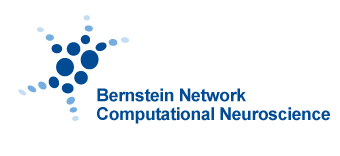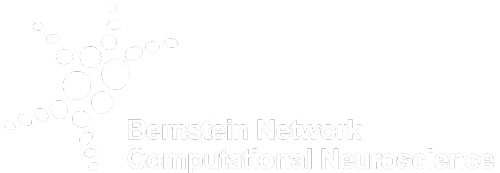Rostock scientists at the world’s forefront of dystonia research
In Collaborative Research Centers (CRC), interdisciplinary basic research is conducted according to the will of the German Research Foundation (DFG) as the funding body. The CRC 1270 ELAINE of the University of Rostock is far ahead in its special fields - electrically active implants and dystonia. Here, so-called deep brain stimulation brings new insights into the function of the brain.

Prof. Dr. med. Rüdiger Köhling stands in front of a deep brain stimulation diagram at the Institute of Physiology of the University of Rostock on July 27, 2023. The Collaborative Research Center 1270 ELAINE of the University of Rostock researches, among other things, the therapy of the disease dystonia with the help of deep brain stimulation. Photo: University of Rostock CRC 1270 ELAINE
Bernstein members involved: Rüdiger Köhling
It is estimated that around 160,000 people in Germany are affected by the disease dystonia. “This makes it the second most common motor disorder after Parkinson’s disease,” says the head of the Institute of Physiology at the University of Rostock, Prof. Dr. Rüdiger Köhling. The “Deutsche Dystonie Gesellschaft” describes the disorder as a dysfunction originating in the brain in which the control of movements is uninfluenceable.
“There are many different manifestations of dystonia,” Köhling reports. It manifests itself, for example, in involuntary movements that can occur in fits and starts or permanently, as in torticollis. “In many cases, the movements are associated with severe pain, which is why many affected people withdraw from public life.”
It is known that the origin of dystonia, like that of Parkinson’s disease, lies in the so-called basal ganglia. These are core areas below the cerebral cortex. However, there are no drugs with which the disease can be specifically treated. A future therapy could therefore be deep brain stimulation. This is already being used successfully in patients. However, there are patients who do not benefit from it, and practically nothing is known about the mechanism of stimulation. Therefore, basic research on animal models is urgently needed, but the progress made so far is remarkable. Köhling says that the SFB is at the forefront of the world with its methodology.
According to Köhling, the CRC offers “the incredible opportunity” to collaborate with engineers who design and build stimulators. He cites Prof. Dr. Ing. Dirk Timmermann, the former head of the Institute of Applied Microelectronics and Computer Engineering at the University of Rostock. “He managed to make our experimental stimulators smaller, lighter and more portable than anything that has been done before.”
“Our stimulators are also characterized by the fact that they run on a battery ten to a hundred times longer than previously known neurostimulators,” Timmermann explains. So they allowed long-term experiments for the first time. They also detected and reported errors themselves, such as defective stimulation electrodes or other malfunctions. “This makes experiments more traceable and safer,” says Timmermann.
In deep brain stimulation, Köhling says a specific area of the basal ganglia, the globus pallidus, is exposed to precisely defined electrical impulses using a fine electrode. “The improvement in dystonia symptoms can take longer than the actual stimulation – sometimes hours, sometimes days.” It’s different with Parkinson’s, he says. Without stimulation, motor symptoms there would return immediately.
“We don’t yet know why this works differently in dystonia,” Köhling says. But when the globus pallidus was stimulated, the nerve cells there were found to communicate with other brain regions. This means that “when the globus pallidus is stimulated, you get a response from the striatum – another structure of the basal ganglia,” the physiologist explains. So a functional change in communication between the cerebral cortex and basal ganglia is observed, he says.
“It’s apparently a network phenomenon. That could be one explanation why it sometimes takes weeks to get the desired effect after stimulations.” Network activity in the ganglia is therefore one of the research priorities, he said. “ELAINE offers a unique opportunity to get an idea of what actually happens in the brain network in dystonia.” Deep brain stimulation can also be used to treat depression or even dementia.
A team of more than 80 scientists from various faculties has been working in the Collaborative Research Center 1270 ELAINE at the University of Rostock since 2017. The spokesperson of the CRC is the head of the chair of Electromagnetic Field Theory at the University of Rostock, Prof. Dr. Ursula van Rienen. Funding from the German Research Foundation (DFG) amounts to around 24.1 million euros in the first and second funding periods, including the program allowance. The third and final funding period is scheduled to begin in 2025.
Translated from German by AL/Bernstein Network




